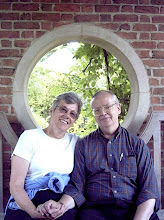We can also relate to the sacred through the rediscovery of pilgrimage. Pilgrimage is a basic human need to connect our lives to places of power. There are places with power because of the way they are: mountain tops, for example, are often places of revelation partly because there is a sense of being up above everything and looking down on it, and partly because they are where the earth reaches up to the heavens. Then there are places which are sacred because of what happened there: where someone has had a vision, some great historical event has taken place, some act of healing, or maybe where some great man or woman has been born or died. The great churches, cathedrals, and temples, and almost certainly places like Stonehenge and Avebury, are located at very special places. Such places are like great outdoor temples through which you relate the community to the life of the heavens.
When pilgrimage was suppressed by the Protestant Reformation in the sixteenth century, this natural way of moving in relation to sacred places was cut off and tourism was invented to replace it. So tourism is a kind of secularized pilgrimage! You still go to the ancient sacred places — the cathedrals, the pyramids, the great henges, the Holy Land — but you no longer go explicitly because you want to connect with the spirit and power of the place. You go there to observe it in some kind of detached way and to take photographs of it to show your friends.
When tourists enter a sacred place of worship they are slightly embarrassed because they can’t really take part otherwise they would not be tourists, they would be pilgrims. When you visit a place as a pilgrim you go with the intention of connecting with the place and you go with some kind of offering. You go there to pray and to seek some vision or blessings. You take back something of the power of the place to share with those around you at home. Most tourists would actually prefer to be pilgrims — they would enjoy it much more!
— Rupert Sheldrake, Discovering the Sacred, pp. 196-197.
My answer to her could not have been an intellectual defense or proof, because I didn’t have one, although I believe that God is the only sane idea in the universe. I wasn’t even sure that if there were “proof” it could be stated verbally. Another’s doubt is not a condition, but a wish, and therefore cannot be reasoned away until the wish changes. So her questions were important because there was indeed something behind my continuing to act as if all these things were true.
In my attempt to answer her, this is what I recognized, and although it wasn’t much, it was all the answer I had, and it was honest: I no longer cared whether what I had seen was true. Life as I had looked at it before was not worth living. It was therefore my decision to live as if this new perception was true. And if the question of whether God exists cannot be answered in the terms in which we ask it, yet the improvement in the quality of our life cannot be denied whenever we assume that God does exist, why then delay making that assumption? Why choose to be right instead of happy when there is no way to be right? I choose to make the assumption and not reconsider. A new way of seeing had been given me for a reason, and I would simply trust that.
For this was not the first time in my life I had looked God in the face. But each time before I had walked away and said, “He is an illusion.” Maybe He is, but I no longer care about that. There isn’t time for uncertainty. For me He exists. That is the only thing I know. And that is the reason I live.
— Hugh Prather, There Is a Place Where You are Not Alone, pp. 34-35.
Subscribe to:
Post Comments (Atom)

No comments:
Post a Comment